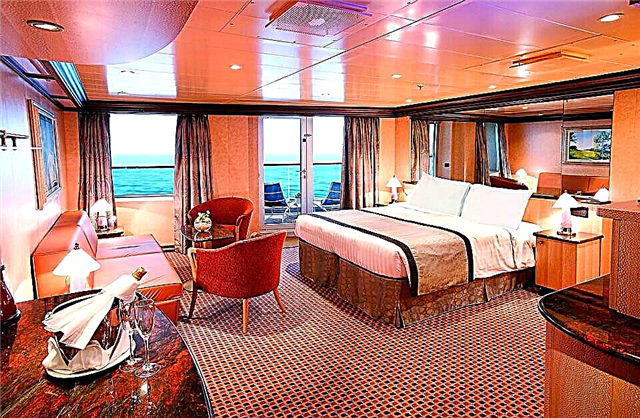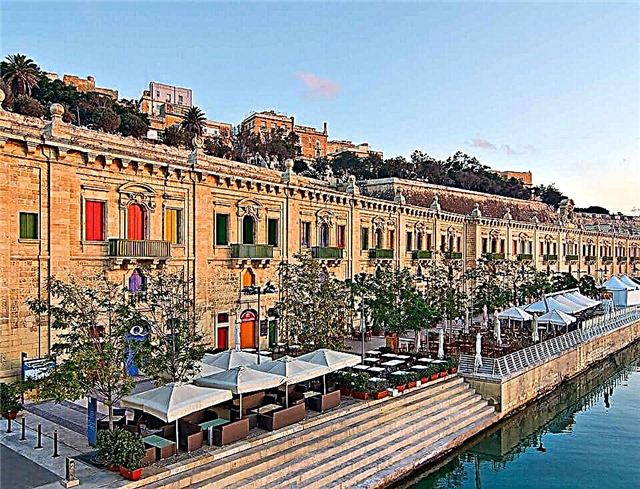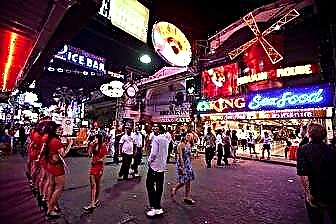The capital of the Czech Republic, Prague, is considered one of the most beautiful cities in Europe. Zlata Prague, as it is fondly called, delights with ancient architectural monuments, grandiose religious buildings, medieval narrow streets. The mild climate, beautiful nature, cozy hotels, excellent local cuisine and relatively low prices make Prague attractive for tourists.
History

The historical part of the city is divided into the Old Town and the New Town. They are connected by the legendary Charles Bridge, which has become a symbol of the capital. The Old Town is home to the Old Town Square.
The first mentions of this place date back to the beginning of the 10th century. In this place, at the intersection of trade routes, in the XII century, the largest market in Europe was formed. In XIII it was named Old Market, and since XIY - Old Town. Merchants even from other countries came here to carry out commercial transactions. In those days, there was a brisk trade in fabrics, clothing, wood products, clay and leather. And also food products - fragrant bread and muffins, gifts of nature, gardening, truck farming and dairy production - berries, mushrooms, vegetables, fruits, cheeses, butter, cottage cheese. Fish was brought from the north of the country.
For centuries this place has been called differently - Staromestský Platz, Big Square. Until now, the name, received in 1895, has survived - Old Town, and the locals call it Staromak. Festivities, fairs and trade deals were held here, and people were publicly executed. In 1422 Zhevlinsky was executed, who raised the poor against the nobility; one of the leaders of the Hussites, Jan Rogach, was killed in 1437. In the first quarter of the XYII century, 27 people were executed for trying to overthrow the Austrian Habsburg dynasty.

Over time, the square became a cultural center: in the XIY century, the construction of the Tyn Church began, then the city hall and the tower were erected, on which the legendary astronomical chimes were installed. Since the 60s of the last century, it is forbidden to enter Staromak by transport - now it is a walking area for pedestrians. But if you wish, you can see all the sights by going around them in carriages harnessed by one or more horses.
Description

The area has the shape of a square, the size of which is almost 15 thousand square meters. m. The houses located along the perimeter combine several architectural trends - graceful Rococo, Renaissance, luxurious Baroque, they logically complement each other. The area is beautiful with a quirky mix of styles. During the day, it is crowded here, many tourists want to see the sights of the capital.
The guests are entertained by street musicians, illusionists, and unexpectedly come to life mime figures - performances are held until late in the evening. Costumed processions, colorful festivals, fairs and other events take place here almost all the time.

You can spend the whole day on the Old Town Square and it will not be boring, because there is enough entertainment here - in addition to street entertainment, you can see the paintings of masters in an art gallery or wander through the Romanesque dungeons, dine in an old beer restaurant, drink aromatic coffee with delicious pastries, attend a church service or a concert of organ music, buy souvenirs.
There is no need to talk about Czech beer - it is a national drink, hundreds of varieties of beer are brewed here, including home breweries according to ancient traditions. In the famous beer house “Old Town Restaurant”, visitors will be offered many varieties of this traditional drink. The building of the restaurant harmoniously fits into the style and architecture of the city.
Tables in the warm season are already located in front of the entrance and you can enjoy not only food and drinks, but also watch the life of the city. The cozy interior room is decorated in ethnic style - solid wooden furniture, many indoor plants, paintings with landscapes of medieval Prague are hung on the walls. The center of Tourism is located on the square - here you can learn about the sights of the city, buy booklets and get a map of the city for free.
Sights

In the center there is a monument to Jan Hus. On the western part of the city hall and the tower with chimes Orloi. It housed self-government bodies. In the northern part is the church of St. Nicholas (Mikulas) - one of the religious buildings that do not belong to Catholicism. The church belongs to the “Czechoslovakian Hussite Church”. In the eastern part there is a palace belonging to the Kinsky family.
One of the brightest representatives of the surname is Berta Kinskaya, the Nobel Peace Prize laureate. An interesting medieval mansion "At the Stone Bell" - the front part of it is made in the Gothic style. It is distinguished by a house sign - a stone bell. This building hosts exhibitions of contemporary artists.

The Tyn School in the eastern part is one of the oldest educational institutions in the capital. Founded in the last quarter of the 13th century, students studied in it in Latin. The institution existed until the middle of the 19th century, then it was transferred to another building. On the main facade you can admire the fresco "Assumption of the Virgin Mary". Of the decorating elements, the most impressive are the arched gallery, the double window and the arcades with the remains of sgraffito (sgraffito is a type of finish when several multi-colored layers of paint are applied to the ground, after drying on this place the desired pattern is scratched) in the Renaissance style.

One of the interesting buildings is the “House by a Minute”, which is part of the town hall complex of buildings. It was originally built in the Gothic style and belongs to the XY century, but then, after renovation, acquired the features of the Renaissance. At the beginning of the XYII century, the façade was decorated with black and white sgraffito painting on historical, biblical and mythological themes. The building houses the Organization of the Prague City Council for the Protection of Monuments, on the ground floor of a café, which offers many varieties of tea, coffee and desserts.
The Trchkovsky House, its other name “At the White Unicorn”, was built in the XY century as the residence of the Trchkovsky family. Nearby is the Cathedral of the Virgin Mary in front of Tyn. There are several small medieval buildings on the square - the Strochow House, the front wall of which is decorated with Renaissance frescoes. One of them depicts Saint Wenceslas on horseback, and a statue of the Madonna is installed above the entrance. The facade is decorated with a graceful balcony in the new Gothic style.
A house with a strange name “At the Stone Lamb”. Particularly curious people can see on the house sign that the lamb is depicted with a horn. Some people think that this is not a lamb, but a unicorn. A natural question arises as to why the house is named “at the lamb”. “At the Stone Table” - here from 1907 to 1914 there was a fashionable salon of Fantova-Wertime. It was attended by famous people, including: Einstein and Kafka. On the house there is a fresco "Consolation of the suffering". There are several other small medieval buildings on Staromak, each of which has its own names. All buildings are perfectly preserved and complement the look of the square, making it unique.
Town Hall with Astronomical Clock
Old Town Hall - The visitor enters the beautifully painted lobby, followed by other rooms.

Brozik Hall - decorated with paintings by the artist Vaclav Brozik on historical subjects. Its area is equal to the area of the entire building. Here is the mayor's chair, which visitors are allowed to sit in.
In the Conference Room there are sculptures of the goddess of justice Themis and Christ. On the walls are the coats of arms of artisans - coopers, shipbuilders, shoemakers and representatives of other professions.Some coats of arms are easy to explain, for shoemakers, for example, boots, but there are also symbolic ones - on the coat of arms of potters Adam and Eve are depicted as a sign that God created man from clay.

Romanesque underground - there are sculptures of saints, prison (the square used to be a place of execution) and storage rooms. Wells are also located here, it is known that the town hall consists of several buildings, united by underground passages and basements.

Jiříkov Hall - decorated with rich chandeliers and beautiful decoration in brown tones.
The registration of the marriage takes place in the town hall - a wedding ceremony in a medieval setting makes this action unique and memorable. In addition, tourists can explore the old premises inside the town hall: see clocks and sculptures, paintings and frescoes. There is an observation deck at the top of the tower - a great chance to admire the city from above and take great photos as a keepsake.

If we talk about the town hall, then its real decoration and attraction are the Orloi clock and chimes. The creation of the watch began in 1410. This complex business was entrusted to the craftsmen Mikulas Kadan and the mathematician Jan Shindel. The creation of clocks in this vibrant place is dictated by the need - so that people are not late for church services and trade deals.
In the XY century, a dial with a calendar was made and sculptures in the Gothic style were installed. The figures of the apostles appeared in the 19th century. Astronomical chimes, as in previous centuries, show the present and old Czech times. The chime dials have four main components. They are located against the background of the Earth and the sky, show the image of the zodiacal ring, the Moon and the Sun. The clock shows sunrise and sunrise, and the golden star is the vernal equinox.

An exciting medieval-style action takes place every hour during the day. At the right moment, the figure personifying Death starts the mechanism. The figures of the 12 apostles appear in the upper openings. Each one holds a certain object in his hands, for example, St. Matthew has an ax, and Peter holds a key. All sculptures are individual, they have different poses, faces and even facial expressions.
Slightly lower in the side parts are sculptures personifying Greed, Death, Turk and the Archangel Michael. These figures also begin to move - the skeleton turns the clock over and nods to the Turk, the Turk shakes his head negatively, the Curmudgeon shakes the purse, and Michael punishes the sinner with a sword. During the Second World War, the chimes were significantly damaged, but were restored, now thousands of tourists admire the masterpiece created by talented craftsmen and scientists.
Church of St. Nicholas

The church was built on the site of a structure known from the 13th century. It was rebuilt several times, the last rebuilding was carried out in 1732-1737. As a result, a grandiose religious building in the Baroque style appeared in the city. The interior features a magnificent organ, stained-glass windows with images of Saints Wenceslas and Mikolash.
Since 1787, by order of King Joseph II, the religious buildings of the country were closed, the same fate befell the Church of St. Mikulas, the city magistracy took it for its needs. Grain was stored here, then furniture, documents, books. As the building fell into disrepair over time, it was decided to demolish it. In 1870, the temple was leased to the Russian Orthodox Church, this saved it from destruction - the temple was restored.
Many items were donated by the Holy Synod, as were the bells cast at the expense of Russia. A grandiose chandelier (choros) adorns the interior decoration of the room. The chandelier was donated by the Russian Emperor Alexander II in honor of the 12th birthday of Tsarevich Nicholas. Made at the Harrachov Manufactory and shaped like an imperial crown. The consecration of the temple took place in August 1874, but after the war, Orthodox services were prohibited. Since 1997, the church has allowed Easter and Christmas processions.
Monument to Jan Hus

The monument to Jan Hus was erected in 1915 to commemorate the 500th anniversary of the execution of the national hero of the Czech people, accused of hereticism. Author - Ladislav Shaloun. In the center is the figure of Jan Hus, turned to face the Tyn Church. Along the perimeter there is an inscription of Jan Hus: “Everyone wants love and truth”. The composition consists of two groups of people - one group represents the victorious warriors, supporters of Gus, the other - the emigrants who were expelled two hundred years after the execution of Gus. Between them is the figure of the Woman-Mother, symbolizing the rebirth of the people.
Church of the Virgin Mary in front of Týn

The church is a functioning Catholic church with Gothic and Baroque elements. The construction of the grandiose structure lasted almost 200 years and ended in the middle of the XYI century. A magnificent Hussite temple appeared in the city. In 1679, the building was seriously damaged by a major fire, its nave (a longitudinal element in the structure of the temple) became much lower. In the XYII century, during the reconstruction, the old Gothic towers were replaced by buildings in the Baroque style.
Today it is a basilica 52 meters long, 28 meters wide, 70 meters high. The interior of the building is magnificent, there are 19 altars, an old font and a stone pulpit dating back to the XY century. In the altar on the right side of the nave is a statue of the Madonna with the Christ Child in her arms. The walls of the church are decorated with paintings by Shkreta and canvases by other famous artists. The citizens of Prague are proud of the unique organ of the church, it was made by the German master Mundt; at the beginning of our century, it was carefully restored in Bonn.
There are more than 60 burial places here, not only of famous people, but also of ordinary parishioners: the astrologer Brahe, Bishop Lucian and a child from a Jewish family, Shimon Abeles. He secretly attended church, and then converted to the Catholic faith. The boy's father, when he found out about this, tortured his son for a long time, and then ordered to kill him. The boy was buried in the temple as a martyr.
Where is it located and how to get there
The Old Town Square is located in the Prague 1 district - in the city center.
You can get to the square by taking the green metro line to Staromestka or Mustek station, if you take the yellow line - to the Namesti Republiky station (Republic Square).
Tram number 1, 2, 6, 14, 17, 23, 41, 57, 59 to the stops: Namesti Republiky, Pravnicka fakulta, Staromestska.
Walk along the medieval streets, admire the majestic Vltava, visit the grandiose temples, taste amazingly delicious Czech cuisine and buy exquisite souvenirs.











